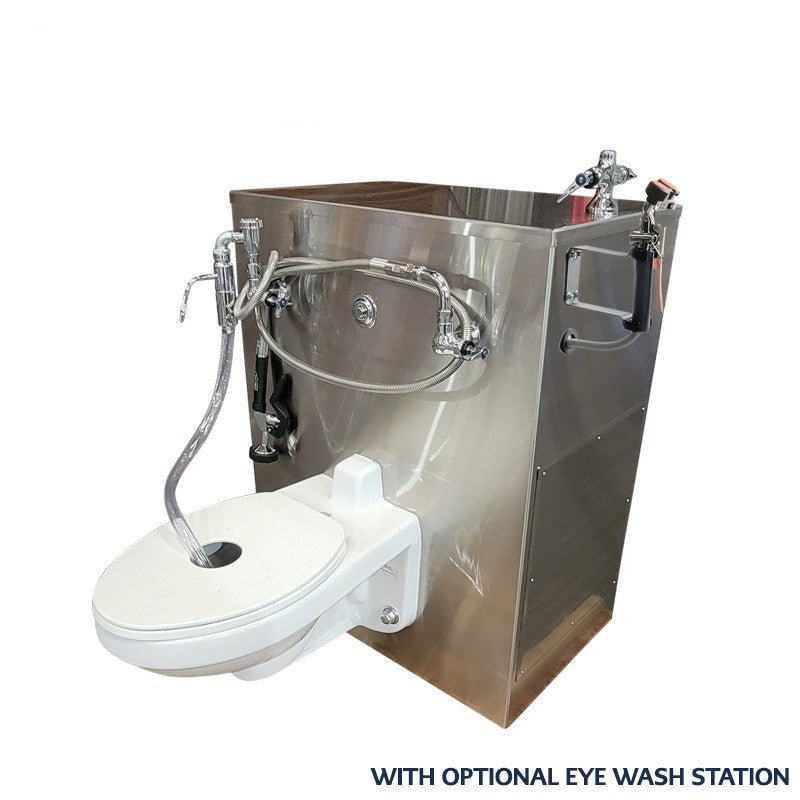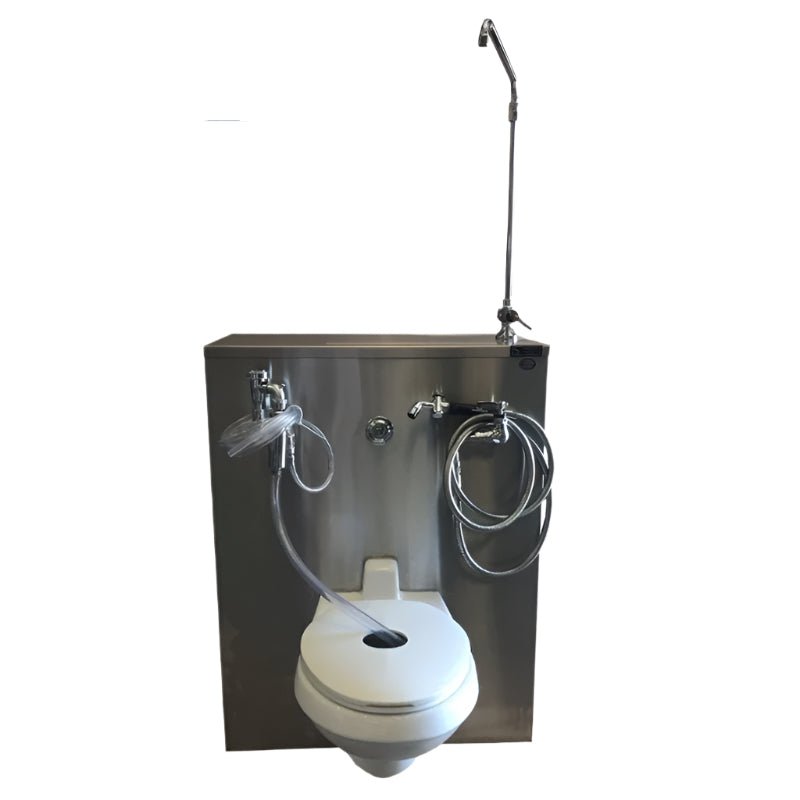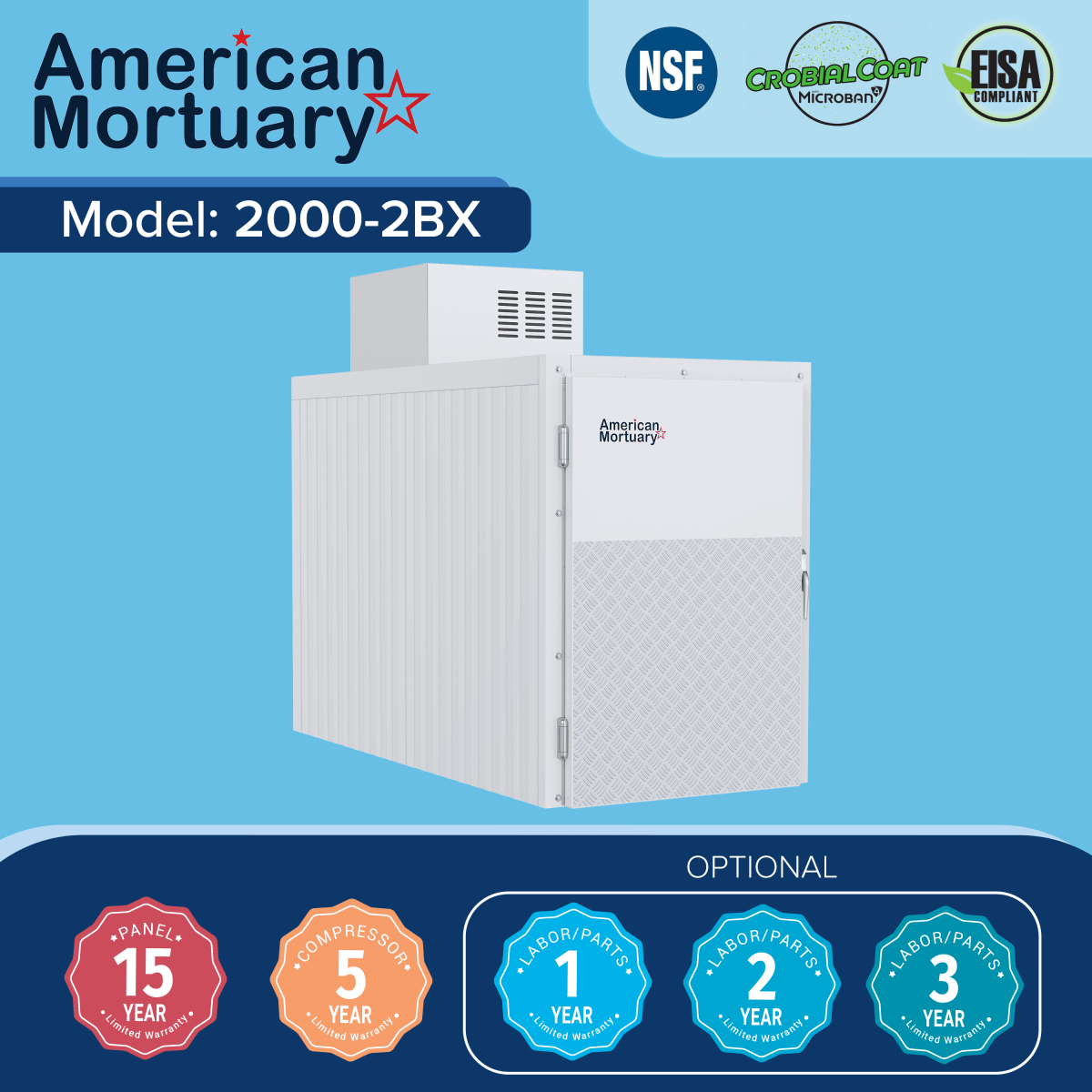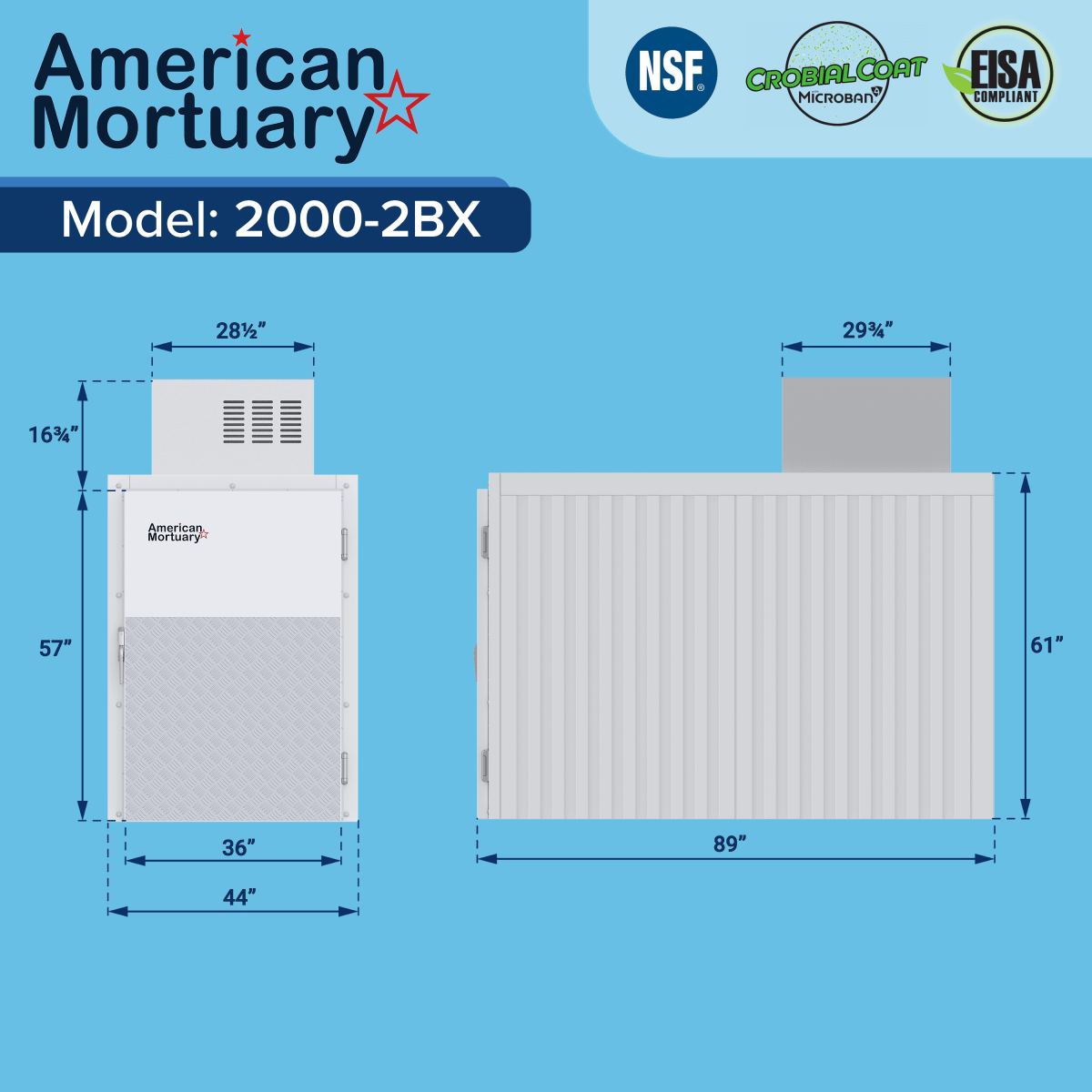Why Personal Refrigerated Cooling Systems Are Essential for Modern Professionals
A PERSON REFRIGERATED COOLING SYSTEM is a compact, wearable cooling device that uses vapor-compression refrigeration technology to maintain safe body temperatures in extreme heat conditions. These systems typically include a mini compressor, condenser, evaporator coil, and insulated reservoir that circulates chilled fluid through garments or direct-contact cooling pads.
Key Features of Personal Refrigerated Cooling Systems:
- Cooling Capacity: 200-400W with temperatures reaching below freezing
- Power Options: DC 12V battery, AC 110/220V, or vehicle power
- Applications: Motorsports, outdoor work, military operations, funeral services
- Runtime: 4-8 hours on battery depending on cooling load
- Temperature Control: Maintains body temperature 15-30°F below ambient
Personal refrigerated cooling systems work by moving heat away from the body through a closed-loop refrigeration cycle. Unlike evaporative cooling methods that rely on water evaporation, these systems use phase-change refrigeration to achieve consistent cooling regardless of humidity levels.
The technology has evolved from military battlefield applications to serve professionals in funeral services, motorsports, and industrial settings.
As Mortuary Cooler, a national-level mortuary cooler supplier, I've worked extensively with refrigeration systems and understand how PERSON REFRIGERATED COOLING SYSTEM technology can be adapted for professional environments where temperature control is critical.

Common PERSON REFRIGERATED COOLING SYSTEM vocab:
How a PERSON REFRIGERATED COOLING SYSTEM Works
Think of a PERSON REFRIGERATED COOLING SYSTEM as your home refrigerator's athletic younger sibling - same basic principles, but built for the road and designed to keep you cool instead of your leftovers.
These devices rely on vapor-compression refrigeration, the same proven technology that's been keeping things cool for over a century. The compressor acts like the system's heart, squeezing refrigerant vapor until it's hot and highly pressurized.
Next comes the condenser, where all that concentrated heat gets dumped into the surrounding air. As the refrigerant cools down, it transforms from a hot gas into a liquid.
The liquid refrigerant then hits the capillary tube, which acts like a tiny bottleneck. When the high-pressure liquid squeezes through this restriction, it suddenly expands and gets very cold.
Finally, the cold refrigerant reaches the evaporator, where heat from your body gets absorbed, turning the liquid refrigerant back into vapor. The thermostat keeps everything running smoothly by cycling the compressor on and off to maintain your perfect temperature.
| Feature | Refrigerated Cooling | Evaporative Cooling |
|---|---|---|
| Humidity Independence | Works in any humidity | Ineffective above 60% humidity |
| Temperature Drop | 15-30°F below ambient | Limited by wet-bulb temperature |
| Water Consumption | None | High (1-2 gallons/hour) |
| Power Requirements | 200-400W | 50-150W |
| Maintenance | Minimal | Regular water refills |
Core Components of a PERSON REFRIGERATED COOLING SYSTEM
The mini compressor is where the real innovation shines. These little powerhouses typically range from 1/20 to 1/4 horsepower and use variable-speed technology originally developed for military applications.
The micro-channel condenser uses plate-to-plate design to squeeze maximum cooling performance out of limited space. They're typically made from durable materials like 316 stainless steel.
Your insulated reservoir serves as both storage tank and circulation pump for the chilled coolant - usually a glycol mixture that won't freeze even at very low temperatures.
The quick-disconnect hoses let you disconnect from the main unit when you need to move around, then reconnect quickly without losing system pressure or coolant.
The Refrigeration Cycle Demystified
The secret sauce in any refrigeration system is phase change - the change of refrigerant from liquid to vapor and back again. This process involves latent heat, which is energy that changes a substance's state without changing its temperature.
When refrigerant evaporates in the evaporator coil, it absorbs roughly 930 BTU per pound of R-134a refrigerant. That's tremendous cooling power, which explains why refrigeration beats simple air circulation.
The COP (Coefficient of Performance) measures efficiency - modern personal systems achieve COPs of 2.5-3.5, meaning they move 2.5-3.5 times more heat than the electrical energy they consume.
Sub-cooling and superheat are critical factors that determine system performance. Sub-cooling means the liquid refrigerant gets cooled below its normal condensing temperature, improving efficiency. Superheat ensures the refrigerant vapor gets heated above its evaporating temperature, protecting the compressor from liquid damage.
The Scientific research on refrigeration fundamentals confirms that proper superheat control is essential for both system longevity and peak performance.
Applications, Benefits & Health Impact
When you're working in extreme heat, your body becomes your biggest challenge. PERSON REFRIGERATED COOLING SYSTEMS have become essential tools across industries where heat stress isn't just uncomfortable—it's dangerous.
Construction workers and welders face some of the toughest conditions. These cooling systems let them work safely for hours instead of taking dangerous shortcuts to escape the heat.
Racing drivers deal with cockpit temperatures that can hit 140°F or higher. When you're traveling at 200 mph, losing focus for even a second can be fatal. Personal cooling systems keep drivers sharp and responsive when it matters most.
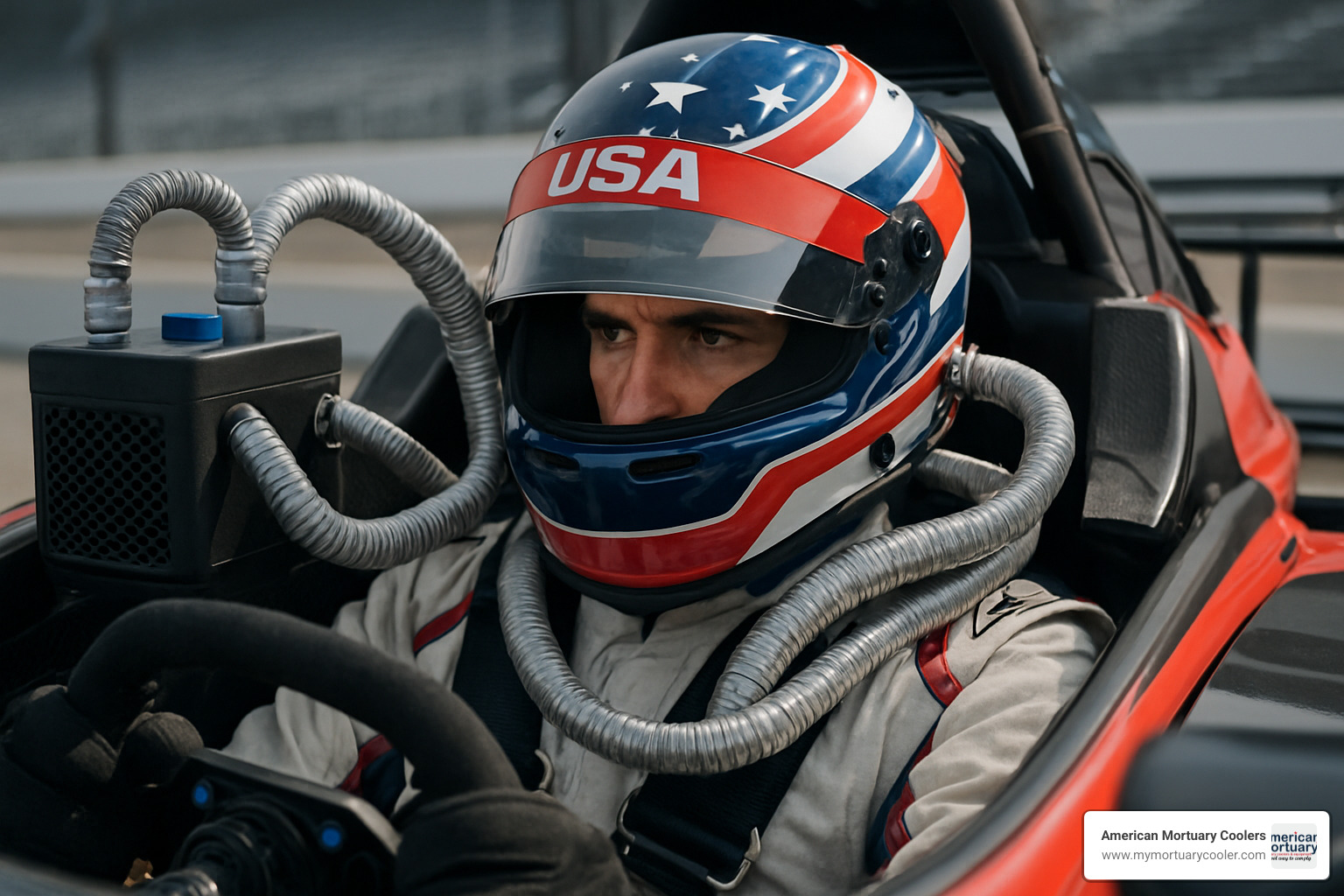
Military personnel wearing heavy protective gear in desert environments depend on these systems for mission success. When you're carrying 80 pounds of equipment in 120°F heat, personal cooling can mean the difference between completing your mission and becoming a casualty.
In funeral services, embalmers and funeral directors often work in preparation rooms that can get uncomfortably warm. The detailed, precise work required during embalming procedures demands steady hands and clear thinking—both of which suffer when you're overheated.
The health benefits go beyond comfort. Heat stress reduces your brain's performance by up to 15% and increases accident risk by 5-7% for every degree your core temperature rises above normal. PERSON REFRIGERATED COOLING SYSTEMS help keep your body at that optimal 98.6°F where you perform best.
The productivity gains are impressive too. Maintaining optimal body temperature can increase work efficiency by 10-15% in high-heat environments and reduce fatigue-related errors by up to 25%.
The More info about body cooling solutions explains how cooling and hydration work together for maximum effectiveness.
Advantages Over Traditional Cooling Methods
Rapid cooling is the first major advantage. While evaporative coolers slowly chip away at temperature, refrigerated systems hit target temperatures within 5-10 minutes.
Hygiene stays simple with closed-loop systems. No worrying about dirty water, bacterial growth, or finding clean water sources.
Humidity becomes your friend instead of your enemy. Evaporative cooling actually adds moisture to the air—exactly what you don't want in already humid conditions. Refrigerated systems can actually remove humidity.
True portability means freedom from power outlets and water sources. Battery-powered units give you 4-8 hours of operation wherever you need it.
Water independence removes a major logistical challenge. In areas where clean water is scarce or expensive, not needing water for cooling operation is a huge advantage.
The More info about body cooler products shows how these advantages translate into safer, more productive work environments across different industries.
Energy Efficiency, Refrigerants & Sustainability
When you're choosing a PERSON REFRIGERATED COOLING SYSTEM, understanding the environmental impact and energy efficiency isn't just good for the planet – it's good for your wallet too.
The heart of any cooling system is its refrigerant. R-134a has been the go-to choice for years because it works well, but it has a Global Warming Potential (GWP) of 1,430. R-290 (propane) is a natural option with a GWP of just 3, but having a flammable gas in a wearable device makes safety engineers nervous. CO₂ (R-744) has a GWP of 1, but needs high operating pressures that make systems heavier and more complex.
The Montreal Protocol and its Kigali Amendment are pushing everyone toward low-GWP alternatives.
Today's systems use variable-speed drives that adjust compressor speed based on how much cooling you actually need. This smart approach can boost efficiency by 20-30% compared to older fixed-speed systems.
Lithium-ion packs now provide steady power throughout their entire discharge cycle, so your cooling doesn't fade as the battery drains. Some systems even offer solar charging capability.
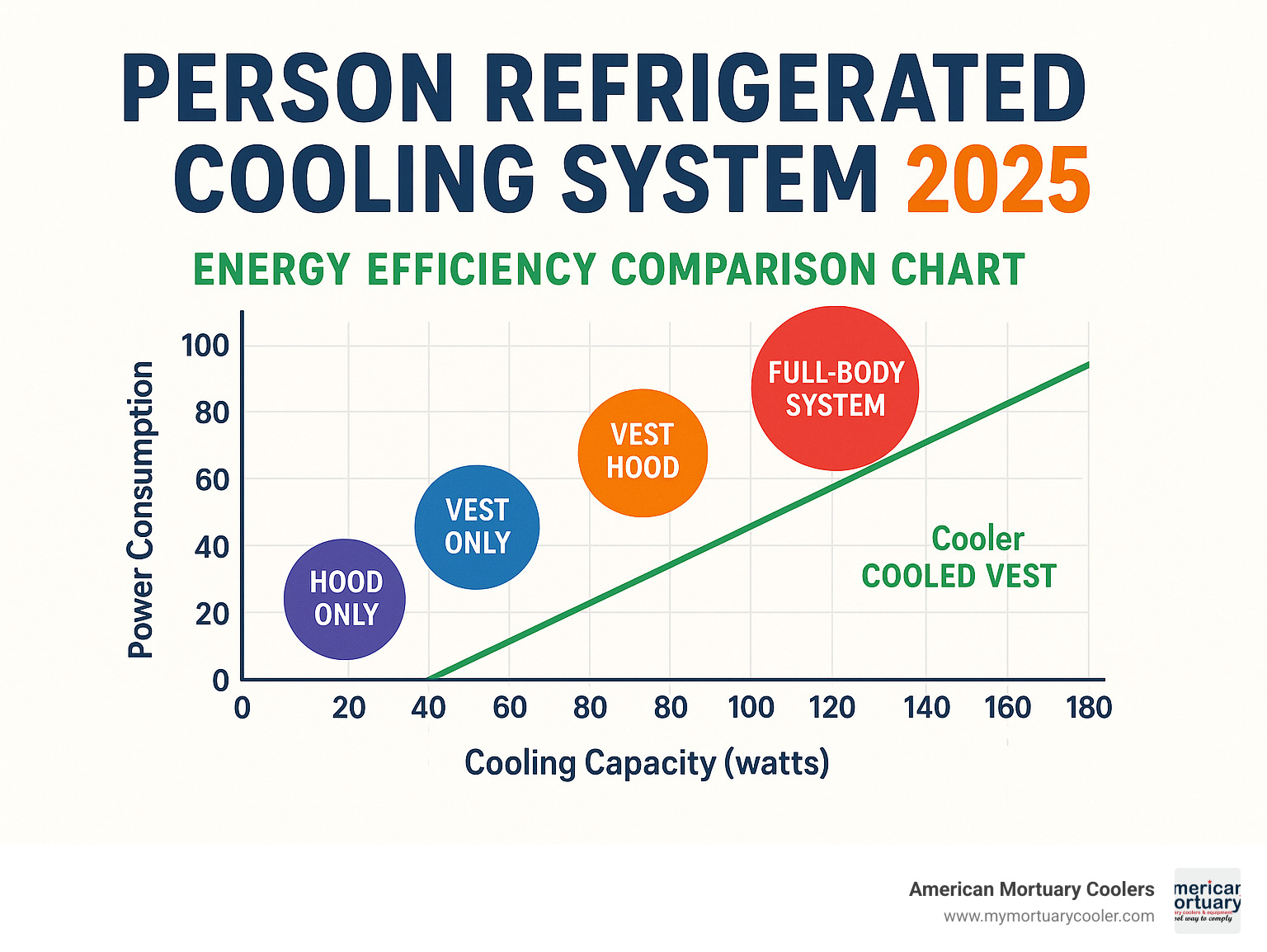
Personal refrigerated cooling systems cost more upfront – typically $1,099-$2,899. But they're often cheaper to run than you might think. There's no ice to buy, no water to replace, and maintenance is minimal. Most systems last 5-10 years compared to 2-3 years for evaporative alternatives.
The Scientific research on natural refrigerants shows we're moving toward more sustainable options.
Technology Evolution & Future Trends
Miniature rotary compressors are the current stars, originally developed for keeping soldiers cool in combat zones. These tiny powerhouses now deliver efficiency that rivals much larger systems while running on 12V DC power.
Smart sensors are making these systems genuinely intelligent. They monitor temperature, humidity, and even your activity level to automatically adjust cooling output.
Advanced materials are revolutionizing heat transfer. Micro-channel heat exchangers pack incredible surface area into tiny spaces, while phase-change materials store and release cooling energy more effectively.
The future holds exciting possibilities. Elastocaloric cooling uses shape-memory alloys that heat up when stretched and cool when released. Magnetic refrigeration uses magnetic fields to create cooling effects.
IoT telemetry is already appearing in high-end systems. Fleet managers can monitor system performance remotely and schedule maintenance before problems occur.
Environmental Impact & Best Refrigerant Choices
The industry is pushing toward refrigerants with GWP below 150, but this creates challenges for wearable systems. Many low-GWP refrigerants are flammable or toxic.
Personal systems use much smaller refrigerant charges – typically 0.5-2 pounds compared to dozens of pounds in building HVAC systems. Even with higher-GWP refrigerants, the total environmental impact is relatively small.
Charge minimization is a key strategy. Engineers are designing systems that achieve maximum cooling with minimum refrigerant.
Modern systems include electronic leak detection and automatic shutdown features. If refrigerant starts leaking, the system knows and shuts down before significant loss occurs.
Best practices include regular leak testing, proper system evacuation, and always using EPA-certified technicians for service work.
Buying, Operating & Maintaining Your Personal System
Choosing the right PERSON REFRIGERATED COOLING SYSTEM feels a bit like buying a car - you need to match the system to your specific needs, budget, and how you'll actually use it.
Understanding the real costs goes beyond the sticker price. Basic 200W systems typically run $1,099-$1,499, while mid-range 400W units cost $1,699-$2,299. Professional-grade systems can reach $2,299-$2,899. The cheapest option isn't always the most economical in the long run.
Sizing your system correctly makes all the difference. Your body surface area plays a big role - larger individuals simply need more cooling capacity. If you're doing heavy physical work, your body generates more heat, so you'll need a more powerful system. Environmental conditions matter too - working in 100°F heat with high humidity demands more from your cooling system than a dry 85°F day.
Safety certifications aren't just bureaucratic paperwork - they're your protection. Look for UL listing for electrical safety, EPA compliance for refrigerant handling, and OSHA compatibility if you're using the system at work.
Proper installation and setup can make or break your system's performance. The system needs to be vacuumed to 400 microns before charging, all connections must be leak-tested, and refrigerant charge levels need verification.
Warranty coverage typically spans 1-2 years and should cover compressor failure, refrigerant leaks, electrical component defects, and battery performance where applicable.
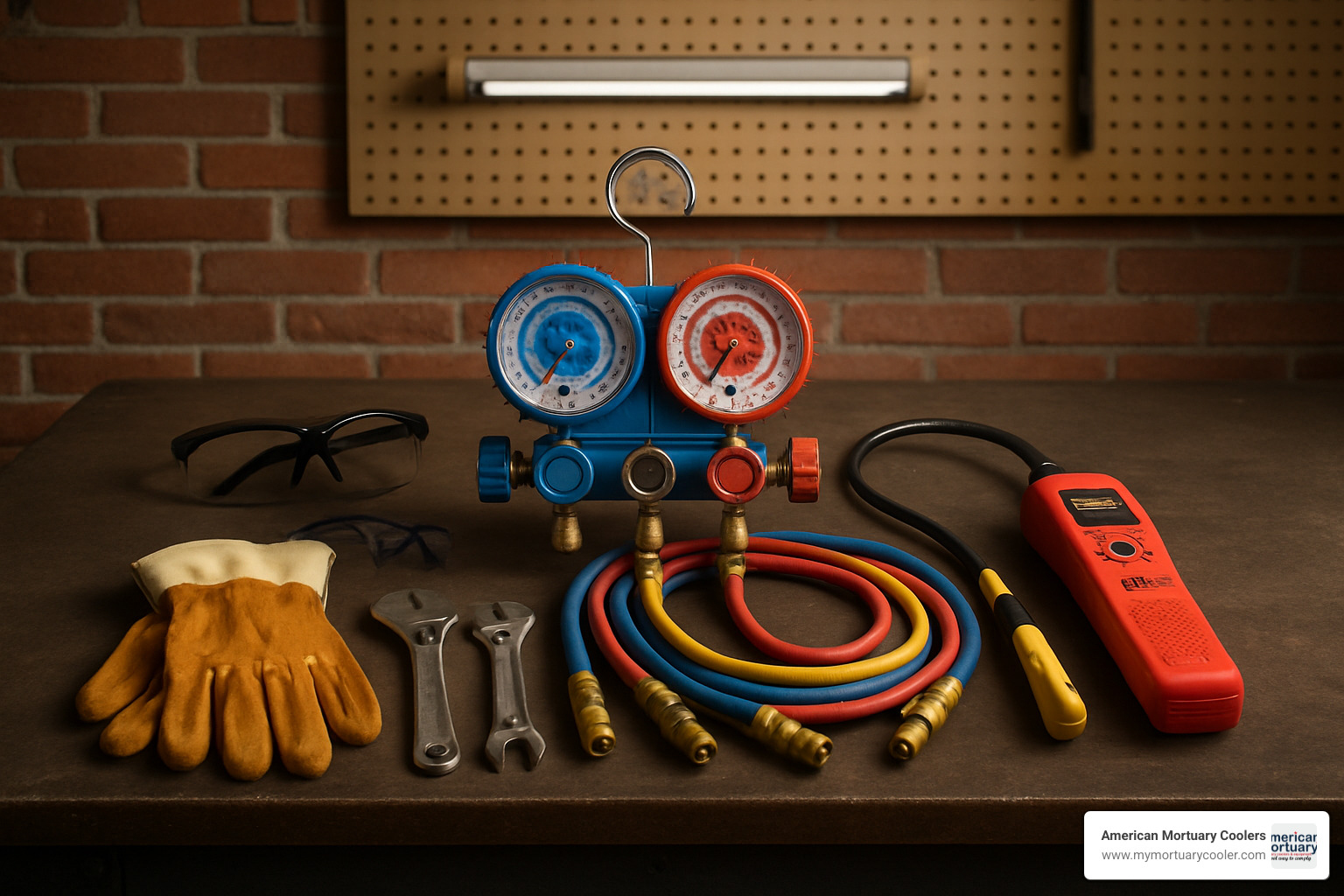
The All About Personal Refrigerated Cooling Systems for Hot Weather provides additional guidance for your specific situation.
Maintenance Checklist for Your PERSON REFRIGERATED COOLING SYSTEM
Taking care of your PERSON REFRIGERATED COOLING SYSTEM isn't complicated, but it does require consistency.
Monthly maintenance keeps small issues from becoming big headaches. Filter replacement tops the list - clean or replace air filters to maintain proper airflow. Visual inspection takes just a few minutes but can save you from costly repairs. Look for refrigerant leaks, damaged hoses, or loose connections.
Battery health deserves special attention if you're using a portable unit. Test the battery capacity and charging system performance monthly.
Quarterly maintenance goes deeper. Coil cleaning keeps heat transfer efficient - clean condenser and evaporator coils with approved cleaners. Refrigerant leak scanning with an electronic detector checks all joints and connections.
Check all electrical connections and tighten as needed. Run a performance test to verify your cooling capacity still meets specifications.
Annual professional maintenance is worth the investment. A complete performance audit by an EPA-certified technician can catch problems you might miss.
Keep a spare parts kit handy for field repairs. Stock replacement filters, quick-disconnect fittings, fuses and electrical components, and basic hand tools.
Some maintenance tasks legally require EPA-certified technicians - refrigerant charging or recovery, compressor replacement, and system evacuation and leak testing.
Frequently Asked Questions about Personal Refrigerated Cooling Systems
How long can the battery-powered unit run on a single charge?
This depends on how hard you're working your system. For light cooling loads, like using a 200W system on a moderately warm day, you're looking at 6-8 hours of runtime. When you're dealing with heavy cooling loads - maybe a 400W system fighting extreme heat - expect more like 3-4 hours.
The newer systems with smart controls adjust power automatically based on conditions, giving you an average of 4-6 hours of reliable cooling. Plus, some units now offer hot-swappable battery packs, so you can keep working while one battery charges.
Are hydrocarbon refrigerants safe inside wearable systems?
Hydrocarbon refrigerants like R-290 (propane) are fantastic for the environment with a Global Warming Potential of just 3. But propane is flammable, creating safety challenges for wearable systems.
Systems using flammable refrigerants typically limit the charge to under 150 grams and add improved leak detection systems with automatic shutdown features.
Most wearable PERSON REFRIGERATED COOLING SYSTEMS currently stick with non-flammable refrigerants like R-134a or CO₂ for safety reasons. When you're wearing the system, safety comes first.
What temperatures can I realistically expect under extreme heat?
In moderate conditions - say 85-95°F with low humidity - your cooling garment will typically run at 45-55°F. That gives you an effective body temperature reduction of 15-20°F.
When conditions get brutal - 100-110°F with high humidity - you'll see cooling garment temperatures more like 55-65°F and effective body temperature reductions of 10-15°F.
The goal isn't necessarily maximum cooling. It's about maintaining your core body temperature within safe ranges. Even modest temperature reductions can dramatically improve your comfort, safety, and ability to work effectively.
Conclusion
After diving deep into PERSON REFRIGERATED COOLING SYSTEMS, it's clear these aren't just fancy gadgets - they're genuine game-changers for anyone working in extreme heat. From race car drivers battling 140°F cockpits to funeral directors maintaining precision during long procedures, these systems deliver cooling when it matters most.
The journey from military battlefields to everyday professional use shows how far this technology has come. What started as specialized equipment for soldiers is now helping construction workers stay safe, embalmers work comfortably, and athletes perform at their peak.
At American Mortuary Coolers, we've seen how proper cooling transforms work environments. Our experience with custom cold-chain engineering across Tennessee, Georgia, Illinois, South Carolina, Texas, California, New York, and Pennsylvania has taught us that temperature control isn't a luxury - it's essential for safety and productivity.
When your core body temperature stays in that sweet spot around 98.6°F, everything works better. Your brain stays sharp, your hands stay steady, and you can focus on doing great work instead of just surviving the heat.
The upfront investment might seem steep at $1,099 to $2,899, but consider the alternatives. Heat exhaustion isn't just uncomfortable - it's dangerous and expensive. A quality cooling system pays for itself by keeping you healthy and effective.
The technology keeps getting better too. Smarter sensors, longer battery life, and more eco-friendly refrigerants are making these systems more practical every year.
Whether you're shopping for your first system or upgrading an existing setup, proper sizing and maintenance make all the difference. A well-chosen PERSON REFRIGERATED COOLING SYSTEM that's properly maintained will serve you reliably for years, even in the toughest conditions.
From our base in Tennessee, we deliver custom cooling solutions nationwide because we understand that every application is different. What works for a welder might not suit a funeral director, and what's perfect for outdoor construction won't necessarily fit motorsports needs.
The bottom line? If heat stress is affecting your work, health, or performance, these systems offer a proven solution. The technology is mature, the benefits are real, and the investment makes sense for anyone serious about staying cool under pressure.
For more insights into professional cooling solutions and how they can transform your work environment, check out our More info about our comprehensive cooling guides. We're here to help you find the perfect cooling solution for your specific needs.









